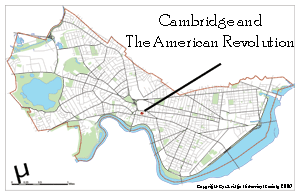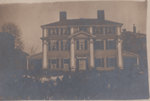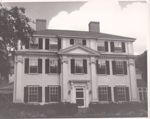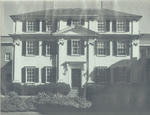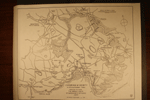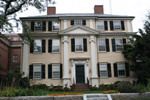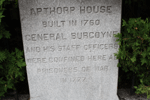East Apthorp House
This house was built in 1760 for the Reverend East Apthorp who was the founder and first rector of Christ Church in Cambridge. He was a Cambridge University educated colonist. Like many of his fellow Tories, Apthorp was notorious for his extravagant expenditures. Even before the other wealthy loyalists were threatened by Cantabridgians and essentially driven out of town in 1775, Apthorp faced criticism for his grandiose mansion. In fact, in a 1764 controversy that resulted in him fleeing to England, Cantabridgians dubbed Apthorp’s home “Bishop’s Palace.”
The property was then sold to John Borland, a fellow affluent loyalist who, with the other Tories, fled in 1775, fearing for his life. Following Bordland’s departure, the house was seized by patriot leaders who converted it into barracks that were utilized by Continental soldiers throughout the Siege of Boston.
Little more than a year after the Siege of Boston had ended, British General John Burgoyne, and his 5,700 British, Canadian, and Germanic soldiers were marched to Cambridge as a condition of a surrender agreement known as the Saratoga Convention. These men were held as prisoners of war for about a year. The high-ranking British officials were horrified by the arrangements made for them in Cambridge. Large numbers of soldiers were crammed into dilapidated barracks without regard to rank. Their military leaders were imprisoned in some of Cambridge’s finest mansions, but these were all unfurnished. Much to his own trepidation, General Burgoyne was forced to buy all his own furniture and pay rent during his stay at the Apthorp House, where he was housed until his release.
Since the eighteenth century, the Apthorp House has been purchased by Harvard University. Currently, it is the Master’s Residence of the Adams House.
Map of General Burgoyne and Convention Troops Parole Limits in Cambrige
Apthorp House Today
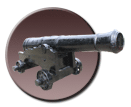 |
Back to Interactive Map |
